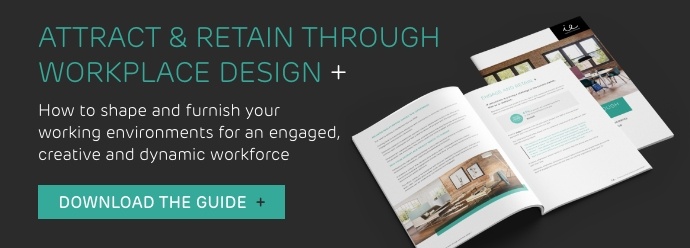In today’s job market, salary and benefits are no longer enough to attract top talent. Job seekers are becoming increasingly discerning about the organisations they choose to apply to and work for.
Learning and Development (L&D) can play an important role in attracting, retaining and engaging talent.
But the world of L&D is constantly evolving and organisations need to keep pace if they want to continue to attract and keep top candidates.
The role of L&D in attracting and retaining talent
Several studies have revealed how important L&D opportunities are in attracting and retaining talent:
- 65% of job seekers choose organisations based on quality of upskilling opportunities provided (Gallup)
- 76% of employees would stay at a company longer if there more L&D possibilities (Microsoft Work Index)
By offering comprehensive L&D programmes, organisations can position themselves as a desirable place to work. Talented individuals seek out opportunities for growth and development, and a strong L&D focus demonstrates an organisation’s commitment to investing in its employees’ professional development.
This, in turn, not only helps attract top talent but also increases employee engagement, satisfaction and loyalty, leading to improved retention rates.
How AI is influencing L&D
“In the ever-evolving landscape of learning and development, artificial intelligence (AI) is emerging as a transformative force. HR specialists and industry leaders recognise its potential to revolutionise workplace learning, improve knowledge retention and support employees' professional growth.” People Management
The emergence of artificial intelligence (AI) as a topic of excitement among L&D practitioners in 2023 is evident from the Global Sentiment Survey. Conducted among over 3,500 L&D practitioners across more than 100 countries, the survey identified AI as a prominent trend.
The launch of ChatGPT in November 2022 coincided with the survey, potentially contributing to the increased interest in AI.

L&D practitioners are already exploring the potential impact of AI, particularly in the form of chatbots. AI-powered chatbots have the capability to revolutionise workplace learning in several ways:
- Personalised learning - Chatbots can adapt to individual learning paces and styles, delivering tailored explanations, practice problems, and feedback based on each learner’s performance. This personalised approach ensures that learners receive content and support that aligns with their unique needs and preferences.
- Intelligent content creation - Chatbots can automate content creation processes, generating interactive and engaging learning materials. For example, they can stimulate conversations and provide on-the-spot guidance.
- Scalability - Chatbots possess the ability to scale learning resources effectively to a large number of people. Their capacity to provide individual feedback and support to thousands of learners simultaneously surpasses what a human teacher can achieve in terms of reach and efficiency.
- Continuous learning - Chatbots can facilitate continuous learning by offering just-in-time information and resources to learners. For instance, they can provide targeted assistance to individuals seeking to upskill or re-skill in specific areas, delivering relevant information precisely when needed. This empowers learners to engage in continuous learning and stay up to date in their field.
Donald H Taylor, an expert in the field of adult learning, skills and technology, who is behind the Global Sentiment Survey, explains how AI will evolve to support workplace learning in the future:
“In the future, AI will enable L&D to stay with the learner much more consistently as they apply learning in the flow of work. Because AI can cope with unstructured and voluminous data, it will start to use the data generated in workflow apps - like Slack, Microsoft Teams, Google Drive, email clients - and provide performance support and identify longer-term development needs based on a 360-degree, 24-7 view of the learner. This will mean L&D can play a more central role in organisational strategy and delivery.”
How workplace design can support learning
Workplace design also has a significant influence on employee learning experiences. Here are 10 ways in which it can support and enhance learning:
1. Variety of learning spaces
Everyone learns in different ways, so the most important thing to acknowledge is that you’ll need to offer a variety of learning spaces - quiet spaces, creative spaces, and spaces where they can interact with others and ask questions. Offering workers different ways and environments in which to learn will ensure you get the best engagement.
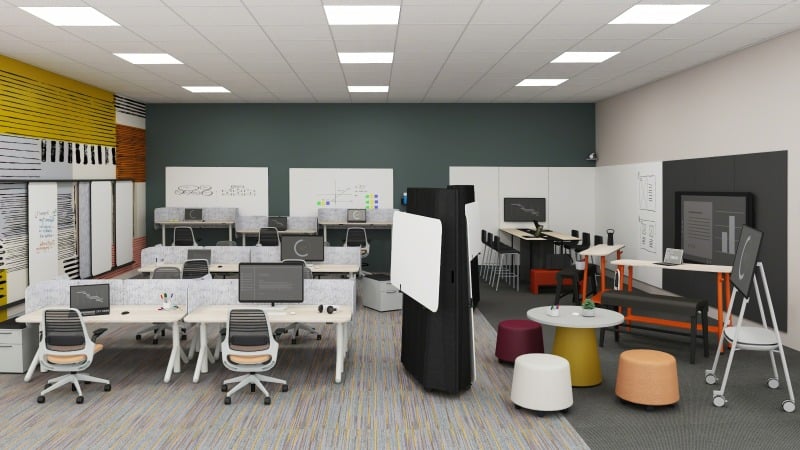
2. Flexible learning spaces
Design flexible spaces that can be easily configured to accommodate various learning activities. These spaces can include comfortable seating arrangements, moveable furniture, and writable surfaces to encourage brainstorming, group discussions, and collaborative learning sessions.
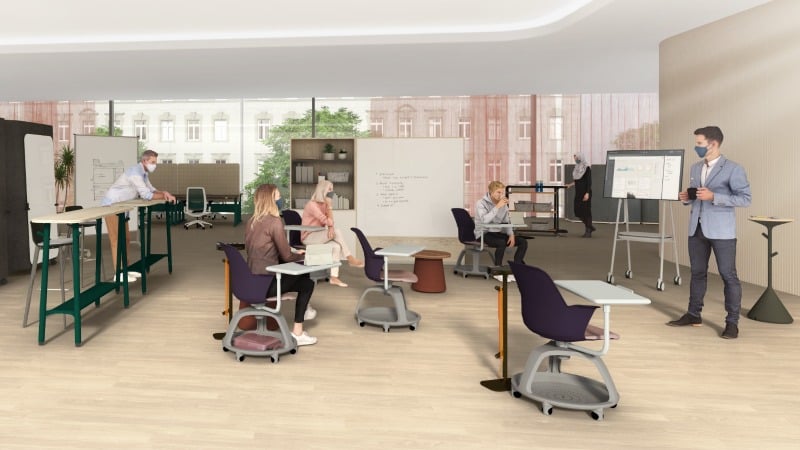
3. Dedicated learning areas
Allocating specific areas within the workplace for learning activities, such as training rooms, learning lounges, or innovation hubs, helps create a dedicated space for learning. These spaces can be equipped with the necessary technology, resources and tools to support both individual and interactive learning experiences.
4. Informal collaboration zones
Incorporating informal collaboration areas, such as common areas or coffee corners, encourages spontaneous knowledge sharing and informal learning among employees. These spaces provide opportunities for impromptu discussions, idea exchanges, and peer-to-peer learning, fostering a culture of continuous learning.
5. Technology integration
Integrating technology, such as interactive displays, video conferencing tools and learning management systems into the workplace design facilitates easy access to digital learning resources. Employees can engage in online courses, webinars or virtual training sessions seamlessly, enhancing their learning experience.
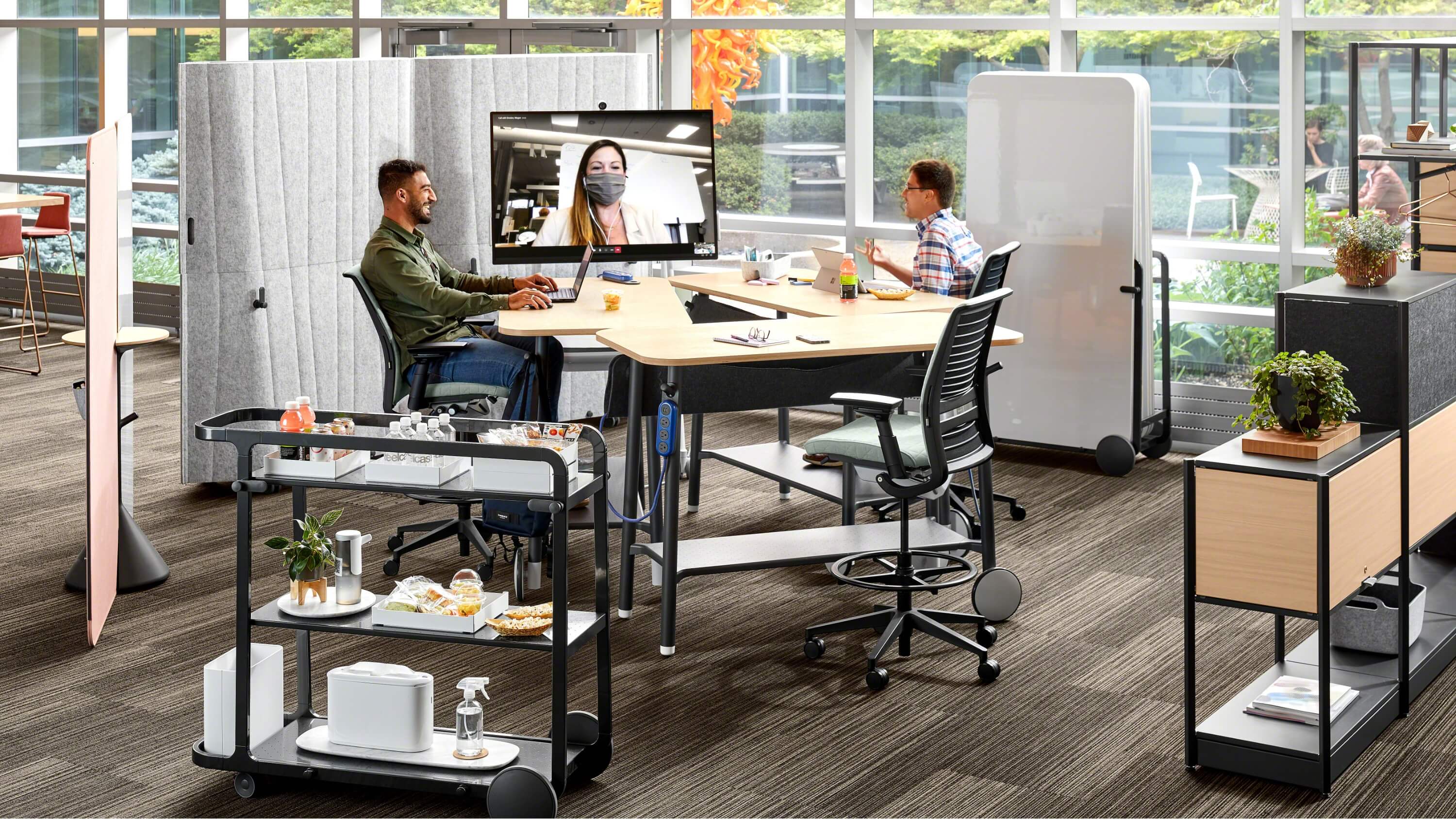
6. Natural light and biophilic design
Maximising natural light and incorporating elements of nature through biophilic design principles has been shown to improve cognitive function and creativity. Well-designed spaces with ample daylight, greenery and natural materials create a positive and stimulating environment that enhances focus and supports learning.
7. Acoustic design
Providing a comfortable acoustic environment is essential for effective learning. Incorporating sound-absorbing materials, acoustic screens, quiet zones and designated areas for focused work helps reduce distractions and ensures a conducive environment for concentration.
In the space below, acoustic screens help separate a learning space from the rest of the open-plan.
.png?width=800&height=450&name=My%20project%20(7).png)
8. Accessible learning resources
Designing the physical space with easy access to learning resources, such as libraries, digital knowledge repositories, or learning corners helps to promote a learning culture. Employees can readily access books, e-learning platforms or other education materials, fostering a self-directed learning mindset.
9. Collaboration and interactive zones
Creating spaces that encourage collaboration, such as open-plan work areas, breakout rooms or project pods facilitate knowledge sharing and collaborative learning. These spaces promote cross-functional communication, teamwork, and the exchange of ideas, enabling employees to learn from one another's expertise and experiences.
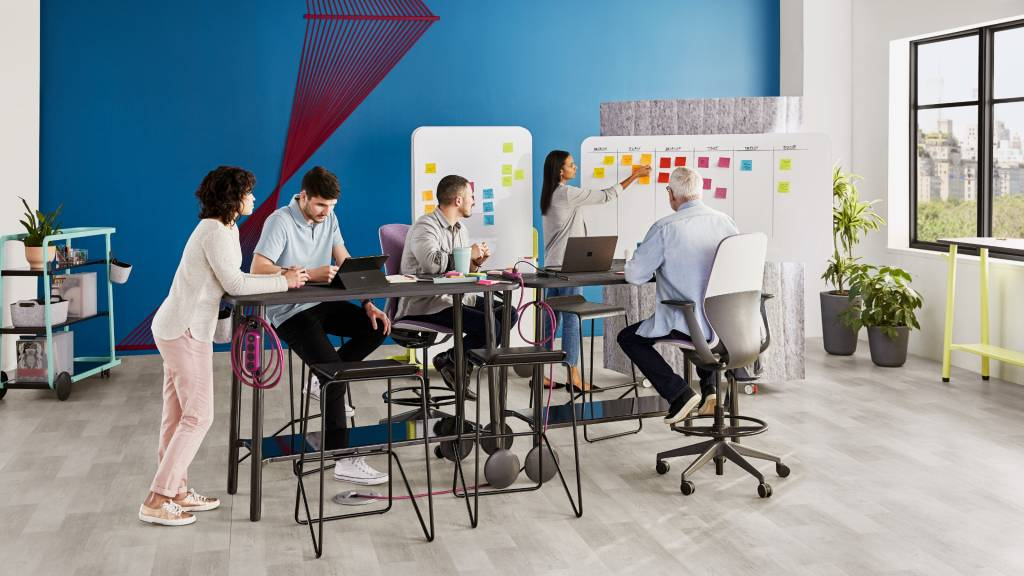
10. Wellbeing and comfort
Designing a workplace that prioritises wellbeing and comfort contributes to a positive learning experience. Ergonomic furniture, adjustable workstations, breakout areas for relaxation and wellness amenities support employee’s physical and mental wellbeing, ensuring they can focus on learning effectively.
Summary
Technology advancements in L&D, such as the emergence of AI, are helping to improve the workplace learning experience for workers, who are attracted to organisations who are as committed to their professional development as they are.
By intentionally designing the workplace to support employee learning, organisations can also foster a culture of continuous development, collaboration, and knowledge sharing. This, in turn, leads to improved employee performance, engagement, and innovation.




